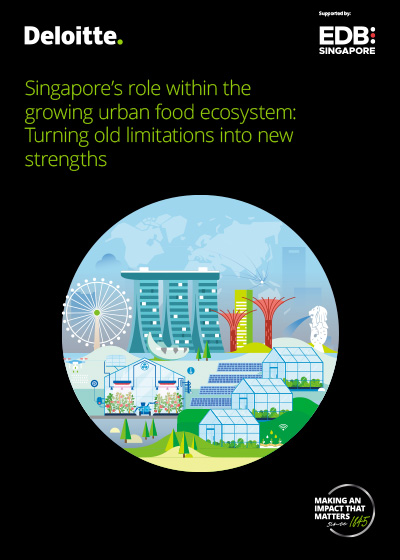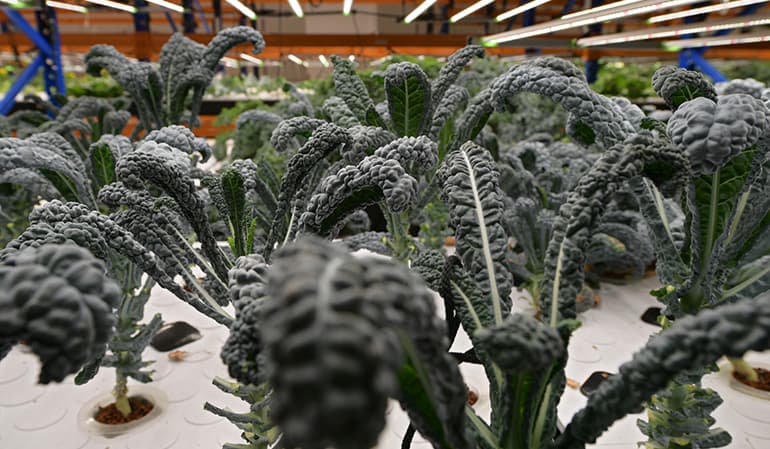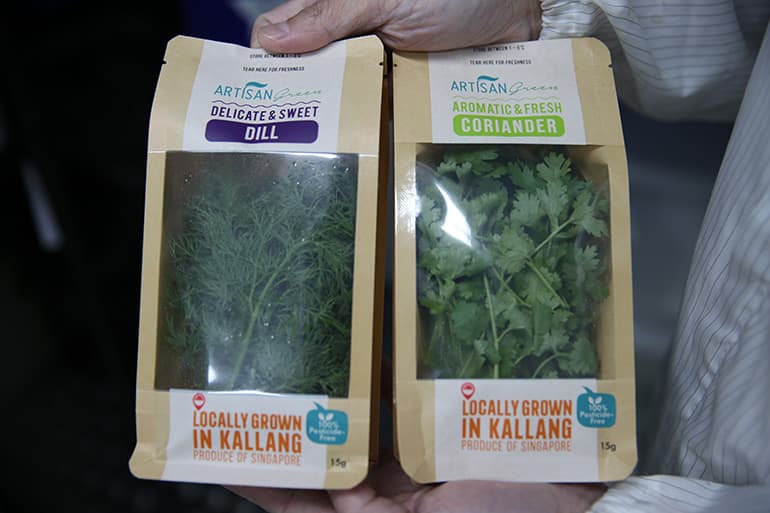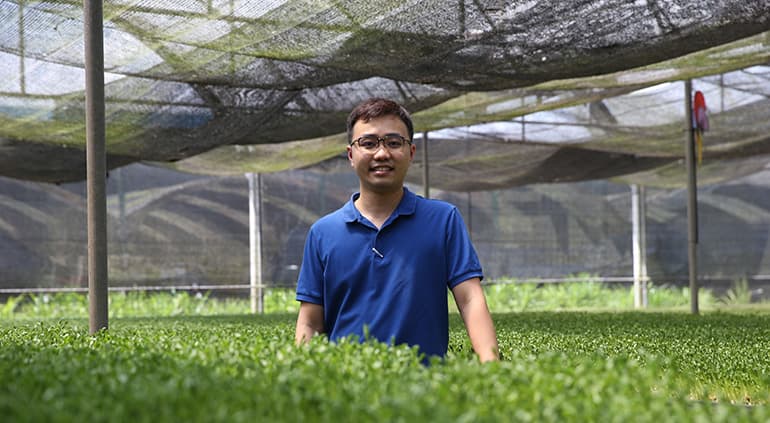Kin Yan Agrotech's farm manager Ng Zhen Khan with the company's pink oyster mushrooms.
Technology has made farming a viable idea in Singapore, but owners of farms hope more can be done to help grow the industry as well as the country’s food supplies.
Just a decade ago, the idea that farming might be a viable career or business in land-scarce Singapore would have seemed laughable.
But technology, which enables people to grow crops indoors and to literally reach for the sky and grow more on less land, has made farming less of a joke.
Many farms in Singapore do not call themselves farms. They are startups, with all that the name implies – innovative, technology- driven, canny disruptors.
The Covid-19 pandemic has also thrown food resilience into sharp relief. People have seen how imported food can be delayed because of logistics, dwindling supplies or protectionism. They have seen bare – albeit temporarily – supermarket shelves.
They are coming round to the benefits of eating locally grown produce, which travel far less so remain fresh for longer.
Singapore farms have also upped their game in the last few years, growing the sorts of things that appeal to their customers.
For those who want Asian greens for stir-fries and such, there are many options. For those who want lettuces, kale, edible flowers and herbs, there are farms which grow these crops too.
According to the Singapore Food Agency, less than 1 per cent of the land here is used for farming.
Its latest figures are from 2019, and there are 220 farms here which produce 14 per cent of leafy vegetables Singapore consumes, 26 per cent of eggs and 10 per cent of fish.
The agency has a lofty aim, for farms here to produce 30 per cent of Singapore’s food by 2030, in a sustainable way. That is the “30 by 30” target farmers talk about.




















